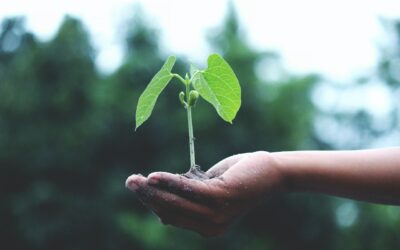This post was originally published on Climate Links
How USAID Supports and Scales Climate Resilience
jschoshinski
Tue, 07/02/2024 – 16:08
Climate shocks and stressors are increasingly pervasive, with specific impacts across sectors, populations, and geographies. Extreme weather events and slow-onset climate impacts pose new risks; aggravate existing social, economic, and political challenges and inequities; and degrade ecosystems and natural resources. They can also drive migration and increase the risk of conflict.
USAID’s 2022-2030 Climate Strategy focuses on actions to support and scale the climate resilience of people, places, ecosystems, and livelihoods vulnerable to the impacts of climate variability and change. These actions help people, communities, and countries anticipate, prepare for, and adapt to current and future climate impacts. This work harnesses the robust evidence that climate adaptation can save lives; increase food security and water security; safeguard ecosystem services and livelihoods; and improve health, including mental health, education, and well-being outcomes. These actions also directly support countries’ adaptation priorities as identified in Nationally Determined Contributions, National Adaptation Plans, and other development and sector plans and strategies.
How is USAID Increasing Climate Resilience?
Scaling Climate Services for Risk-informed Planning, Decision Making, and Early Action
Access to accurate and timely climate information is essential for addressing immediate climate shocks and stressors and planning for a future of shifting climate conditions. Expanding access to and use of data, information, and knowledge strengthens climate resilience across sectors, from agriculture and water to health and education. In Ethiopia, for example, the EPIDEMIA tool informs timely, geographically targeted malaria response with robust forecasts of up to eight weeks. In Rwanda, farmers participating in USAID climate services investments increased yields by 47 percent and income from crops by 56 percent. Climate services are also key for funders, governments, and development planners to identify adaptation pathways for sectors and geographies to guide long-term climate resilience.
Mainstreaming Adaptation in Sector Policy and Practice
Much development globally is guided by sector policy and practice. Climate resilience depends on sector approaches that identify and address the risk of climate impacts to sector development goals. For example, schools in Pakistan built to the latest disaster codes were able to withstand the devastating floods of 2022 and serve as shelters and epicenters of the recovery, in addition to providing continuity in access to education. As impacts like rising temperatures and standing water after floods threaten to undo decades of progress in malaria control and elimination, the President’s Malaria Initiative has released a framework to guide climate-resilient malaria programs.
Focusing on Key Areas of Engagement
Achieving climate resilience depends on engaging a range of actors and processes from the local to global levels. Locally led adaptation supports local people, institutions, and networks to lead adaptation decisions and access the power and resources to supplement local knowledge and expertise. Nature-based solutions for adaptation are key to strengthening climate resilience in rural and urban areas. Transforming key systems, services, and associated sectors towards climate resilience is also necessary. Integrated systems such as energy, transport, water, sanitation, agriculture and food systems, health, and urban, among others, need to address climate vulnerability to achieve climate-resilient pathways. For example, Operationalizing USAID’s Climate Strategy to Achieve Transformative Adaptation and Mitigation in Agricultural and Food Systems presents detailed recommendations and targets for transforming agri-food systems.
Increasing Finance for Adaptation
Significant financial resources are needed to support adaptation needs at all scales, from countries to local communities. Take USAID Climate Ready, which helped regional and national institutions build project development teams to apply for grants from international climate funds like the Green Climate Fund, in turn unlocking more than $562 million for climate resilience activities in the Pacific Islands, benefitting more than 800,000 people. USAID is collaborating with the Government of Peru to channel its own public investment funds to support natural infrastructure solutions to water scarcity. The private sector has key opportunities to innovate and scale adaptation solutions and advance climate resilience within supply chains. USAID launched an Adaptation Finance Window in 2023 that provides catalytic grants to promising adaptation-related businesses and support to help launch new private investment funds that seek to leverage hundreds of millions of dollars in private investment for adaptation. USAID is also supporting the new $100 million CARICOM Resilience Fund to unlock adaptation finance for small and medium enterprises and infrastructure in the Caribbean.





0 Comments